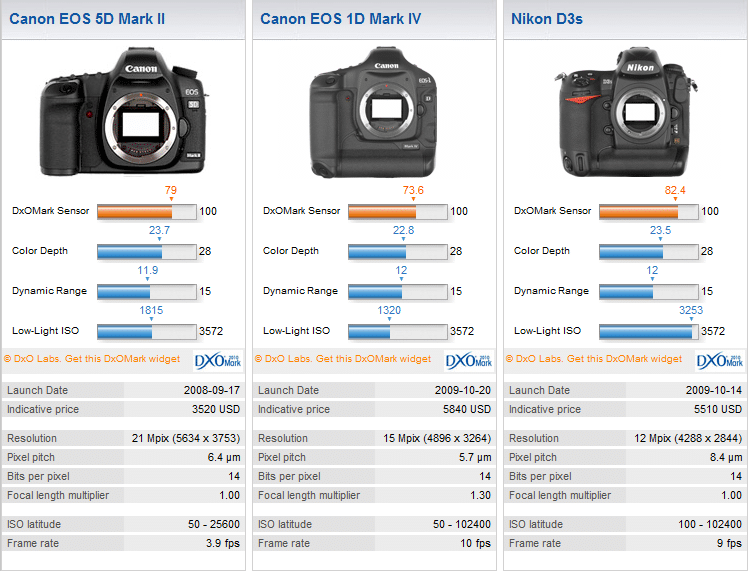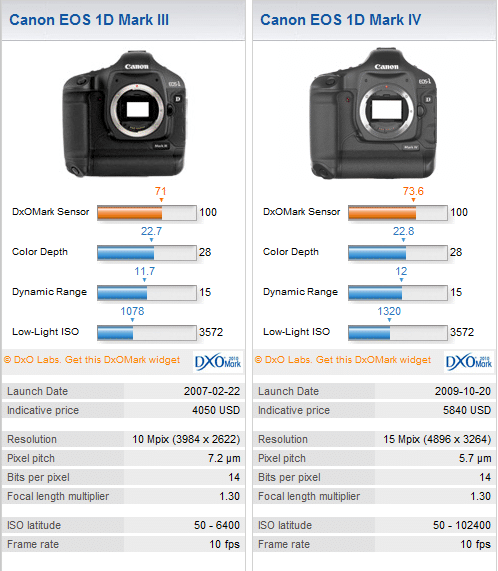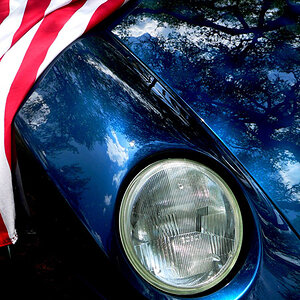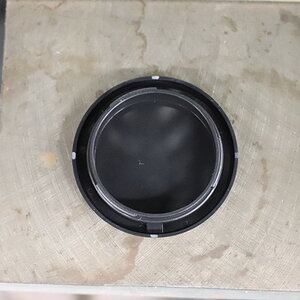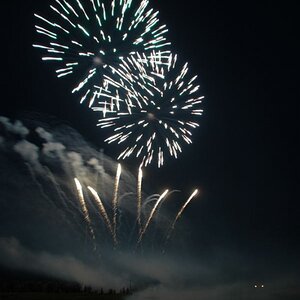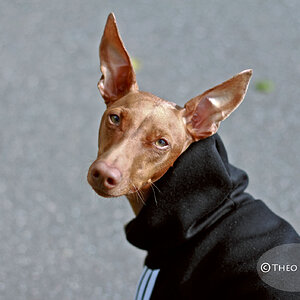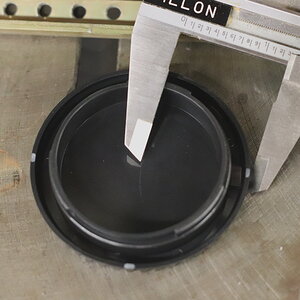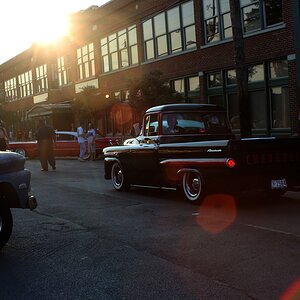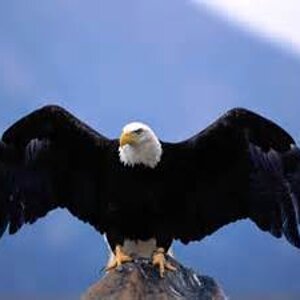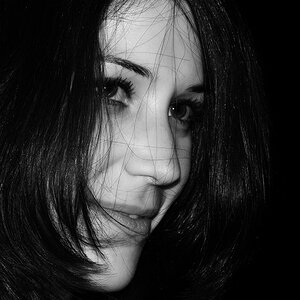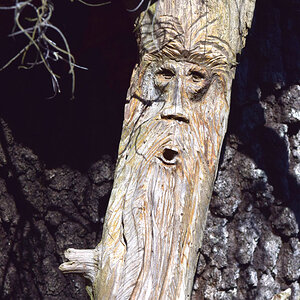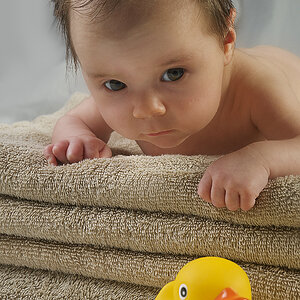Navigation
Install the app
How to install the app on iOS
Follow along with the video below to see how to install our site as a web app on your home screen.

Note: This feature currently requires accessing the site using the built-in Safari browser.
More options
You are using an out of date browser. It may not display this or other websites correctly.
You should upgrade or use an alternative browser.
You should upgrade or use an alternative browser.
DXO Labs 1D4 and D3s now out
- Thread starter inTempus
- Start date
schumionbike
TPF Noob!
- Joined
- Mar 9, 2007
- Messages
- 1,083
- Reaction score
- 0
- Location
- Houston, Texas
- Can others edit my Photos
- Photos OK to edit
a bit surprising, I thought 1DVI would be closer to the D3s then it would be to the 1DIII.
inTempus
TPF Noob!
- Joined
- Dec 15, 2008
- Messages
- 3,692
- Reaction score
- 4
- Location
- Indiana
- Can others edit my Photos
- Photos OK to edit
Well, keep in mind that everyone says the D3s is about 1 to 1.5 stops better at high ISO than the 1D4. If you divide the DXO score for the D3s by 3, you'll see that it's just shy of 3x's better (or 1.5 stops - more like 1.2 or so).a bit surprising, I thought 1DVI would be closer to the D3s then it would be to the 1DIII.
It's not all that surprising. The DXO rating scale just makes the difference look massive.
DScience
No longer a newbie, moving up!
- Joined
- Apr 12, 2009
- Messages
- 1,513
- Reaction score
- 122
- Location
- Denver, CO
- Can others edit my Photos
- Photos NOT OK to edit
So I am very curious, why did the 1D4 come out as a cropped sensor? I mean, can you even consider it a 'full frame' camera?
Derrel
Mr. Rain Cloud
- Joined
- Jul 23, 2009
- Messages
- 48,225
- Reaction score
- 18,941
- Location
- USA
- Website
- www.pbase.com
- Can others edit my Photos
- Photos OK to edit
Compare cameras
like it says in their article, "The 1D Mark IV sensor is 1.66 times smaller than the Nikon D3s."
The D3s is ranked number 4 in overall total sensor performance score, out of all cameras tested. The 1D Mark IV ranks 16th in overall total sensor performance, out of all cameras tested.
As they say in terms of low light High ISO performance, "The Nikon D3s achieves an exceptional result with a score of 3,253 and takes the lead for DxOMark Low-light ISO rankings. This result is obtained thanks to a slightly better SNR and a better Dynamic Range in comparison with the D3. The Canon EOS 1D Mark IV ranks 12th with a score of 1,320. So for high ISO, and after normalization, the difference between these two sensors is more than 1 f-Stop. These two cameras are the first to provide a real ISO 100,000 setting, and here are the results:"
In the low-light ISO scores, the Canon 1D Mark IV scores 7.8 in color sensitivity, while the Nikon scores 10.4 in screen mode. In print mode, the Nikon maintains the lead, scoring 11.4 against the Canon's 9.3.
For a good visual comparison of the superior low-light ISO performance of the full-frame sensor of the 5D mark II over the 1D Mark IV, and for a good visual comparison of the D3s's superior low-light ISO performance, check out this 3-camera comparison. The images give one a pretty good idea of how the D3s looks, with its 3,253 score, followed by the 1D IV in the middle with its scores of 1,320, and the 5D Mark II on the right hand side with its score of 1,815. Overall, the comparisons show what most people understand: a full-frame sensor performs better at elevated ISO settings than a camera with a smaller-than-full-frame sensor.Canon EOS 1D Mark IV vs. Nikon D3s: ISO Comparison | neutralday
And DScience, as Canon USA's Chuck Westfall said in an interview with CNet, when Canon introduced the 1D series body, it was designed to compete with camera that had smaller, APS-C sensors, so at the time the 1.3x FOV of the 1D series APS-H sensor made perfect sense.
like it says in their article, "The 1D Mark IV sensor is 1.66 times smaller than the Nikon D3s."
The D3s is ranked number 4 in overall total sensor performance score, out of all cameras tested. The 1D Mark IV ranks 16th in overall total sensor performance, out of all cameras tested.
As they say in terms of low light High ISO performance, "The Nikon D3s achieves an exceptional result with a score of 3,253 and takes the lead for DxOMark Low-light ISO rankings. This result is obtained thanks to a slightly better SNR and a better Dynamic Range in comparison with the D3. The Canon EOS 1D Mark IV ranks 12th with a score of 1,320. So for high ISO, and after normalization, the difference between these two sensors is more than 1 f-Stop. These two cameras are the first to provide a real ISO 100,000 setting, and here are the results:"
In the low-light ISO scores, the Canon 1D Mark IV scores 7.8 in color sensitivity, while the Nikon scores 10.4 in screen mode. In print mode, the Nikon maintains the lead, scoring 11.4 against the Canon's 9.3.
For a good visual comparison of the superior low-light ISO performance of the full-frame sensor of the 5D mark II over the 1D Mark IV, and for a good visual comparison of the D3s's superior low-light ISO performance, check out this 3-camera comparison. The images give one a pretty good idea of how the D3s looks, with its 3,253 score, followed by the 1D IV in the middle with its scores of 1,320, and the 5D Mark II on the right hand side with its score of 1,815. Overall, the comparisons show what most people understand: a full-frame sensor performs better at elevated ISO settings than a camera with a smaller-than-full-frame sensor.Canon EOS 1D Mark IV vs. Nikon D3s: ISO Comparison | neutralday
And DScience, as Canon USA's Chuck Westfall said in an interview with CNet, when Canon introduced the 1D series body, it was designed to compete with camera that had smaller, APS-C sensors, so at the time the 1.3x FOV of the 1D series APS-H sensor made perfect sense.
gsgary
Been spending a lot of time on here!
- Joined
- Oct 31, 2008
- Messages
- 16,143
- Reaction score
- 3,002
- Location
- Chesterfield UK
- Website
- www.gsgary.smugmug.com
- Can others edit my Photos
- Photos OK to edit
It all means nothing because you will very rarely be shooting over ISO6400 and will not notice the difference between shots at iso6400
inTempus
TPF Noob!
- Joined
- Dec 15, 2008
- Messages
- 3,692
- Reaction score
- 4
- Location
- Indiana
- Can others edit my Photos
- Photos OK to edit
I think most of us were hoping the 1D4 would be full frame and go more the Nikon route. Perhaps doing 18mp on a full frame and then having the 1Ds4 being something like a 30mp full frame.So I am very curious, why did the 1D4 come out as a cropped sensor? I mean, can you even consider it a 'full frame' camera?
The 1.3 will likely end with this body, but we all thought that last time around.
Derrel
Mr. Rain Cloud
- Joined
- Jul 23, 2009
- Messages
- 48,225
- Reaction score
- 18,941
- Location
- USA
- Website
- www.pbase.com
- Can others edit my Photos
- Photos OK to edit
It all means nothing because you will very rarely be shooting over ISO6400 and will not notice the difference between shots at iso6400
Well, Canon shooters will not want to go over 6,400, since that is about the top usable ISO setting the 1D IV can muster...the D3s pulls ahead as ISO levels go up, with 12,800 and 25,600 on the Nikon looking quite usable for photojournalistic use. But then again, that's to be expected with larger pixels, fewer pixels, and a sensor that is 1.66x larger than the 1D IV sensor is.
The D3s is designed for journalism and action photography; the halftone screening of magazines means that resolution in excess of 6MP is basically wasted,even on a double-truck in Sports Illustrated. On an image that is screen printed, there is almost no advantage whatsoever to MP counts that are very high: the "old" Canon 1D,with its 4.1 MP CCD sensor did *beautiful* double truck pictures in Sports Illustrated,as well as all types of other print magazines: the halftone screen knocks down the camera's resolution,so the advantage for a print/magazine/web shooter is in better ISO performance, and not higher and higher resolution. If one wants to shoot landscapes and make large *inkjet prints*, then high-rez cameras in the 21 to 24 MP class make a lot of sense: that's why the Canon 5D Mark II is so,so good!
inTempus
TPF Noob!
- Joined
- Dec 15, 2008
- Messages
- 3,692
- Reaction score
- 4
- Location
- Indiana
- Can others edit my Photos
- Photos OK to edit
Eh, I can comfortably push the 1D4 to ISO 10,000 without any issues in terms of degraded IQ.It all means nothing because you will very rarely be shooting over ISO6400 and will not notice the difference between shots at iso6400
Example:

Larger: http://www.intempusphotography.com/photos/778601637_TLi6z-X3.jpg
But I agree, I've yet to run into a situation where I needed more than ISO 6400. But I know that if I ever need a little more, the 1D4 will deliver quite easily.
As a side note, I found this post on the Canon forums to be interesting.
Regarding your Nikon question, be aware that Nikon (in-camera) clips the black level noise (i.e. if you looked at a histogram the entire left side of the histogram would be chopped off). This "Nikon clipping" means random noise will not average out if you shoot many frames and average the results to reduce noise (i.e. Nikon isn't the greatest camera if you shoot stars). OTOH "Nikon clipping" makes for a lower value of StdDev and therefore DR calculations are better (also improved is the appearance of noise in the shadows).
Edit -- To give you a better feel for what is going on I should mention the Nikon in-camera clipping is worth one stop when you perform DR calculations. That said, the latest Nikon offerings are better than one stop compared to Canon; other factors that favor Nikon include a better CFA and sensor with higher efficiency.
BTW, just so you know, Canon's DPP at its default settings also clips the black level noise but not nearly as much as Nikon's in-camera clipping; this is one of the reasons why ACR conversions (with the black slider set to zero) show more noise than DPP renderings.
Regards,
Joe Kurkjian
inTempus
TPF Noob!
- Joined
- Dec 15, 2008
- Messages
- 3,692
- Reaction score
- 4
- Location
- Indiana
- Can others edit my Photos
- Photos OK to edit
For "photojournalistic" use, ISO 12800 is quite usable on the 1D4 too. Well, that is unless you think this shot taken at 12800 with my 1D4 isn't print quality for a newspaper (I know that it is):Well, Canon shooters will not want to go over 6,400, since that is about the top usable ISO setting the 1D IV can muster...the D3s pulls ahead as ISO levels go up, with 12,800 and 25,600 on the Nikon looking quite usable for photojournalistic use. But then again, that's to be expected with larger pixels, fewer pixels, and a sensor that is 1.66x larger than the 1D IV sensor is.

gsgary
Been spending a lot of time on here!
- Joined
- Oct 31, 2008
- Messages
- 16,143
- Reaction score
- 3,002
- Location
- Chesterfield UK
- Website
- www.gsgary.smugmug.com
- Can others edit my Photos
- Photos OK to edit
I think most of us were hoping the 1D4 would be full frame and go more the Nikon route. Perhaps doing 18mp on a full frame and then having the 1Ds4 being something like a 30mp full frame.So I am very curious, why did the 1D4 come out as a cropped sensor? I mean, can you even consider it a 'full frame' camera?
The 1.3 will likely end with this body, but we all thought that last time around.
I don't, then i would need longer lenses for shooting cricket
- Joined
- May 1, 2008
- Messages
- 25,418
- Reaction score
- 4,999
- Location
- UK - England
- Website
- www.deviantart.com
- Can others edit my Photos
- Photos OK to edit
Considering how popular 1.3 crop and even 1.6 crop are with pro sports and wildilfe photographres I think that crop sensor is here to stay. Certainly the pro sports devision is a very important area for canon (All those expensive long telephoto lenses to be sold).
I expect that at some point we will see a new fullframe 1D line camera body from canon - they just decided to release their crop sensor body first.
I expect that at some point we will see a new fullframe 1D line camera body from canon - they just decided to release their crop sensor body first.
Montana
TPF Noob!
- Joined
- May 27, 2008
- Messages
- 1,533
- Reaction score
- 0
- Location
- Eastern Montana
- Can others edit my Photos
- Photos NOT OK to edit
Yep, 12,800 is totally usable on my mkIV as well.
And just for the record, I like the aps-h sensor. There are other options for full frame cameras.
And just for the record, I like the aps-h sensor. There are other options for full frame cameras.
Most reactions
-
 425
425 -
 292
292 -
 285
285 -
 270
270 -
 221
221 -
 204
204 -
 185
185 -
 179
179 -
 168
168 -
 166
166 -
 146
146 -
 133
133 -
 120
120 -
 95
95 -
I
94
Similar threads
- Replies
- 6
- Views
- 435
- Replies
- 6
- Views
- 535
- Replies
- 2
- Views
- 507

